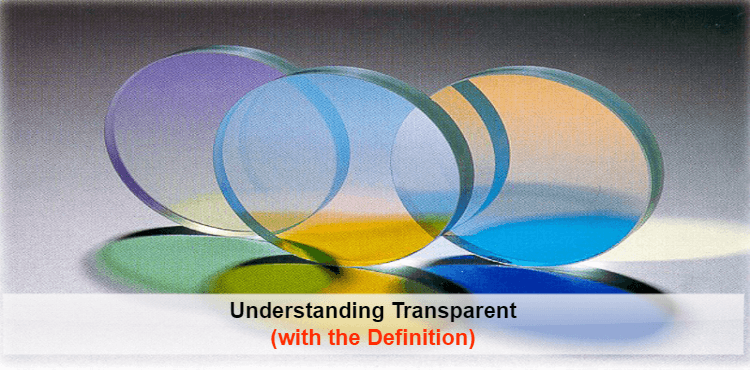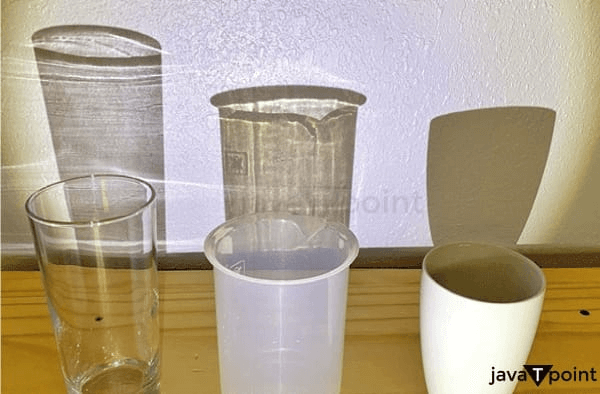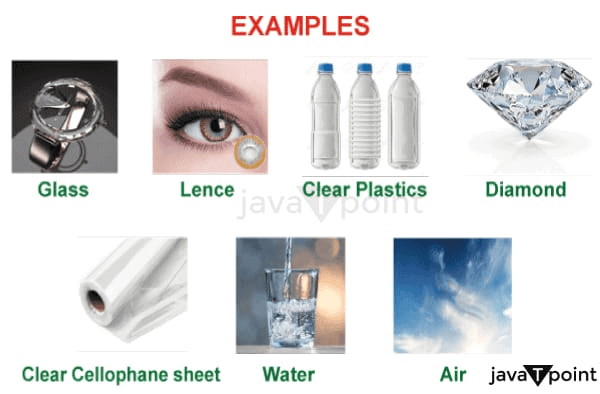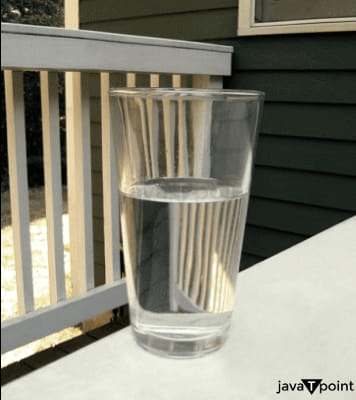Transparent DefinitionTransparency, an extraordinary property exhibited by various materials, has long intrigued humanity with its ability to allow light to pass through with minimal distortion or absorption. Transparent objects have not only piqued our curiosity but also provided us with a unique lens through which we perceive the world. Whether it is the delicate clarity of glass or the ethereal allure of diamonds, transparent objects possess a captivating blend of aesthetic appeal, scientific intrigue, and practical utility. In this immersive exploration, we embark on a journey into the captivating world of transparent objects, delving into their properties, applications, and scientific principles that underpin their significance. 
It is imperative to develop a thorough understanding of transparent property before we plunge into the depths of this magical domain. When referring to a material's transparency, we mean the exceptional property that allows light to pass through it without being significantly scattered or absorbed. Light gently passes through transparent materials when it comes into contact with them to reveal things or scenes that are located on the other side. Contrary to opaque materials, which completely block light, or translucent materials, which scatter light, transparent items allow light to pass through them in an unobstructed and clear way, improving our ability to see and comprehend the outside world almost clearly. Transparent, Translucent and Opaque ObjectsGenerally, objects or materials can be of three types namely transparent, translucent and opaque. In other words, the three categories of objects based on their ability to transmit light are transparent, translucent, and opaque. All of these have their own importance in different fields, be it in real life or for the purpose of study. Let us understand the notable differences between these: Transparent ObjectsTransparent objects allow light to pass through them without significant scattering or absorption. When light passes through a transparent object, it maintains its direction and intensity, resulting in clear visibility of objects behind or through the material. Examples of transparent objects include clear glass, clean water, and certain plastics. Transparent materials have a high degree of clarity, enabling us to see objects clearly through them. Translucent ObjectsTranslucent objects partially transmit light but scatter it in different directions. They allow some light to pass through but not enough to clearly see objects behind them. When light interacts with a translucent object, it gets scattered and diffused, resulting in a blurred or hazy appearance. Examples of translucent objects include frosted glass, wax paper, and certain plastics. Translucent materials create a diffused or softened light effect and often provide privacy by obscuring direct visibility. Opaque ObjectsOpaque objects do not allow light to pass through them. When light encounters an opaque object, it is either absorbed or reflected, preventing any transmission. As a result, objects behind or within opaque materials are not visible. Examples of opaque objects include wood, metal, stone, and most everyday objects. Opaque materials block the passage of light, resulting in a solid or non-transparent appearance. 
Properties of Transparent ObjectsClarity is a fundamental property of transparent objects. It refers to their ability to allow light to pass through without distortion or significant scattering. Transparent materials, such as high-quality glass or optically clear plastics, possess a high level of clarity, enabling clear visibility of objects behind or through them. This property is crucial for applications like windows, lenses, and specific display screens, where maintaining visual fidelity is important. Transmittance is another essential property of transparent objects. It indicates their ability to transmit light, allowing objects positioned behind the transparent material to be seen clearly. Transmittance is often expressed as a percentage, representing the amount of incident light that passes through the material. Higher transmittance values indicate greater light transmission. Transparent materials with high transmittances, such as optical-grade glass, are utilized in optical systems, camera lenses, and light fixtures. The refractive index is another property specific to transparent materials and is a measure of how much light is bent or refracted as it passes through them. Transparent objects have a refractive index greater than 1, which indicates the bending of light. This property is responsible for phenomena like the bending of light rays in lenses, creating magnification and focusing effects. Different transparent materials have varying refractive indices, leading to unique optical properties and applications. Absorption is a property that transparent objects possess to varying degrees. While they allow light to pass through, transparent materials may still absorb certain wavelengths or colours of light to some extent. This absorption can result in a slight tint or colouration in the material. For example, certain types of glass or plastics may exhibit slight colour shifts due to their selective absorption of specific wavelengths absorption. Understanding the absorption characteristics of transparent materials is essential for applications where colour accuracy or control is critical. Different Types of Transparent Materials: ExamplesGlassGlass is one of the most widely used transparent materials. It is composed of a combination of silica, soda ash, and lime, among other additives. Glass can be moulded, blown, or formed into various shapes and sizes, making it suitable for a wide range of applications. Common uses of glass include windowpanes, lenses, optical instruments, laboratory equipment, and packaging containers. Its transparency, durability, and chemical resistance make it highly versatile. PlasticsTransparent plastics have gained popularity due to their lightweight, shatter-resistant nature, and ease of manufacturing. Materials such as acrylic (PMMA), polycarbonate (PC), and polyethylene terephthalate (PET) are commonly used. Transparent plastics find extensive applications in industries such as automotive (headlights, windows), electronics (displays, touchscreens), and packaging (bottles, food containers). They offer design flexibility and can be shaped into complex forms. CrystalsTransparent crystals, such as quartz and diamond, possess unique optical properties. Quartz crystals are commonly used in optics and electronics due to their excellent transparency in the ultraviolet, visible, and infrared regions of the electromagnetic spectrum. They find applications in lenses, prisms, oscillators, and sensors. Diamonds, known for their exceptional hardness and brilliance, are widely used in jewellery. They also have applications in high-performance optics, cutting tools, and semiconductor technology. 
Understanding the properties and types of transparent objects is vital for a wide range of industries. Optical transparency, influenced by factors like composition and thickness, determines the ability of a material to transmit light. Glass, plastics, and crystals are prominent examples of transparent materials, each with its specific properties and applications. Glass offers versatility and is widely used in construction, optics, and packaging. Transparent plastics are lightweight and find applications in the electronics and automotive industries. Transparent crystals, such as quartz and diamond, exhibit unique optical properties, enabling their use in various high-performance applications. Advancements in material science continue to expand the possibilities of transparent objects, opening doors for innovative applications in the future. Applications of Transparent Objects
Due to their special characteristics, transparent items are essential in many different industries and have a wide range of uses. Transparent materials offer a wide range of benefits and opportunities, from architecture and construction to optics and consumer goods. Let's look at some of their most important applications: Architecture and ConstructionTransparent materials, especially glass, have become important in modern architecture. They are extensively used to create visually stunning structures that blend seamlessly with the environment. Glass facades, windows, and skylights allow natural light to enter buildings, reducing the need for artificial lighting and creating a more sustainable environment. Moreover, transparent materials provide transparency and visibility, making spaces feel more open and connected to the outside world. The use of glass in architecture also extends to canopies, partitions, and staircases, adding elegance and functionality to buildings. Consumer Goods and TechnologyA wide range of consumer goods and technology now include transparent objects in their design and operation. Immersive viewing experiences are made possible by transparent displays like those seen on televisions, tablets, and mobile devices. Transparent conductive materials have enabled touchscreens, which have revolutionised how we interact with electronic devices. Transparent materials are also used in wearable electronics, including smartwatches and augmented reality goggles, for both display screens and attractive physical appearance. Transparent materials are used in the automotive industry for windscreens, windows, and headlight covers to increase driver visibility and safety. Transparent plastics are used in packaging to protect products from contamination while allowing customers to view what's inside. Transparent items have a plethora of different uses. They improve aesthetics, offer natural lighting, and produce open, interconnected spaces in architecture. Transparent materials in optics and photonics allow for the manipulation and control of light for laser technologies, telecommunications, and imaging. With their immersive displays, touchscreens, and safety features, transparent items are also essential to consumer goods and technologies. Transparent items have enormous potential in the future thanks to ongoing developments in materials science and technology, which will spur even more cutting-edge uses across industries. Optics and PhotonicsThe special characteristics of transparent objects play a significant role in the domains of optics and photonics. Due to their capacity for light transmission without significant absorption or scattering, these items are essential for manipulating and regulating light for a variety of purposes. Let's study how transparent objects play a crucial role in the intriguing sciences of optics and photonics:
In conclusion, transparent objects form the backbone of optics and photonics, enabling the manipulation, control, and transmission of light for a vast array of applications. Lenses, prisms, optical fibres, and laser systems rely on the unique properties of transparent materials to shape, disperse, guide, and amplify light. These advancements have led to significant breakthroughs in imaging, telecommunications, scientific research, and industrial processes. As technology continues to advance, the role of transparent objects in optics and photonics will undoubtedly expand, paving the way for even more exciting applications and innovations. Future DevelopmentsThere are intriguing prospects for transparent items in a variety of industries as technology develops further. Researchers are investigating novel transparent materials that offer distinctive features and capabilities, such as aerogels, nanocrystalline materials, and metamaterials. Aerogels have the potential to be used in thermal insulation and energy-efficient windows due to their low density and remarkable insulating qualities. The increased optical characteristics of nanocrystalline materials could lead to new developments in optics and photonics. For uses like invisibility cloaks, high-tech lenses, and sensors, metamaterials-engineered structures with exceptional light manipulation capabilities may be promising.
Next Topictraining-definition
|
 For Videos Join Our Youtube Channel: Join Now
For Videos Join Our Youtube Channel: Join Now
Feedback
- Send your Feedback to [email protected]
Help Others, Please Share










